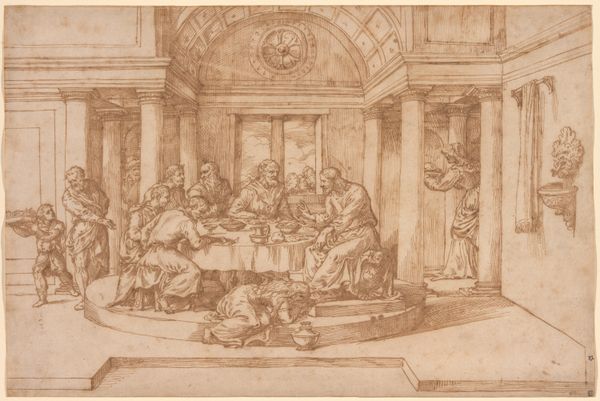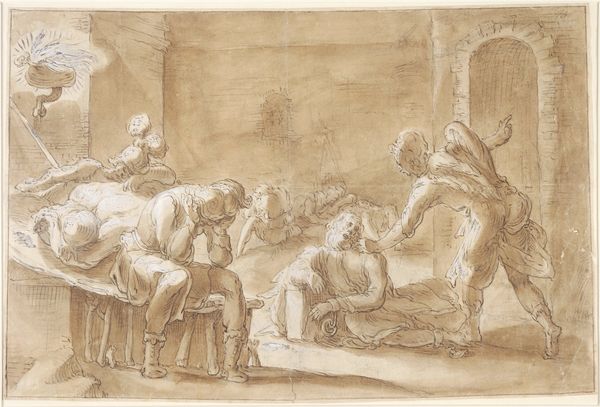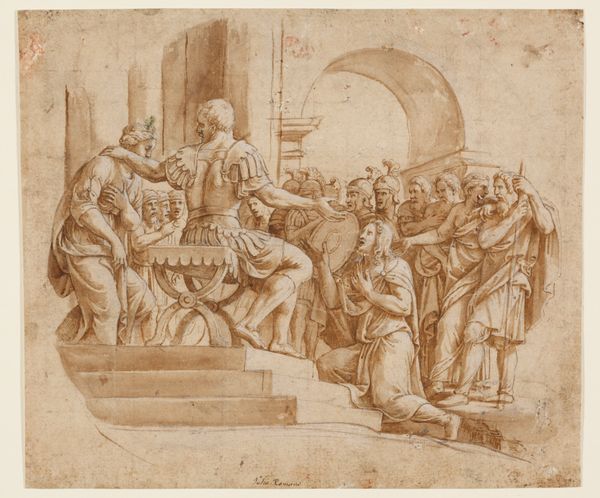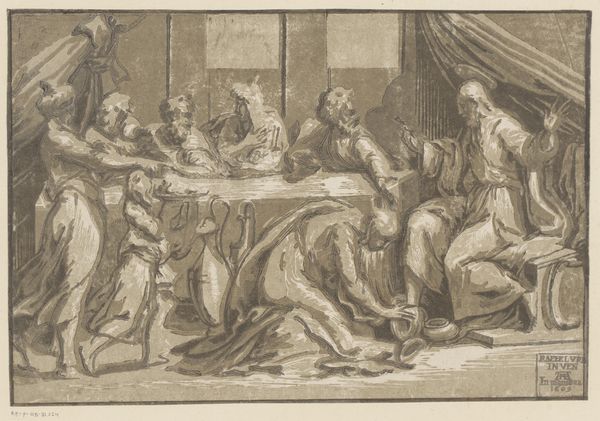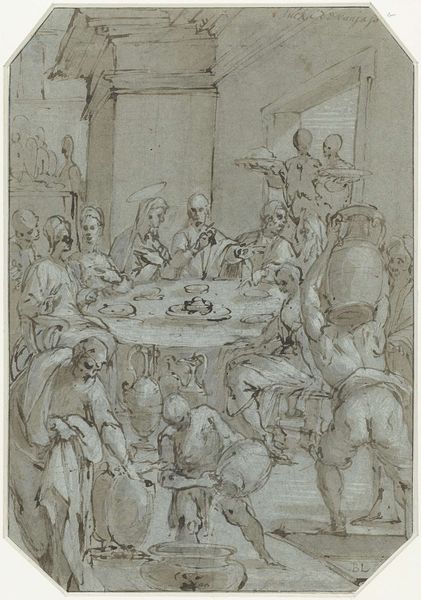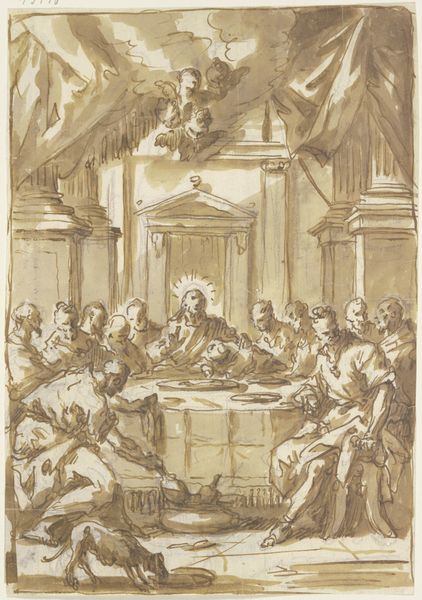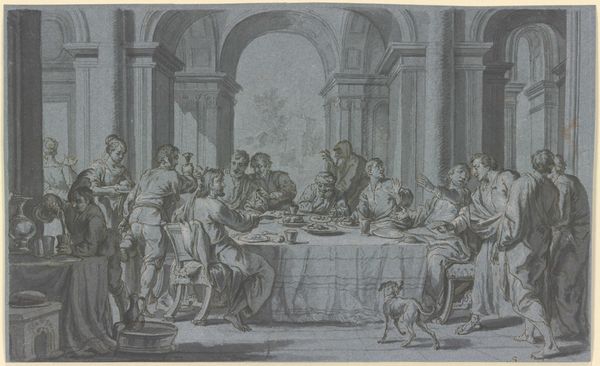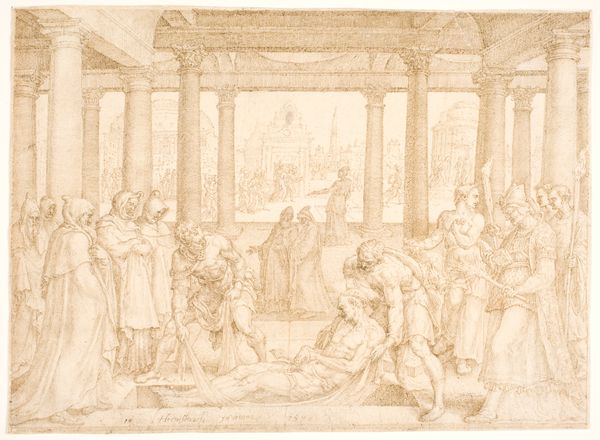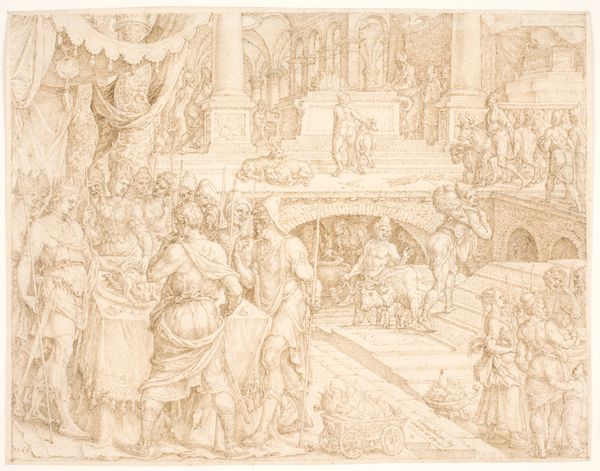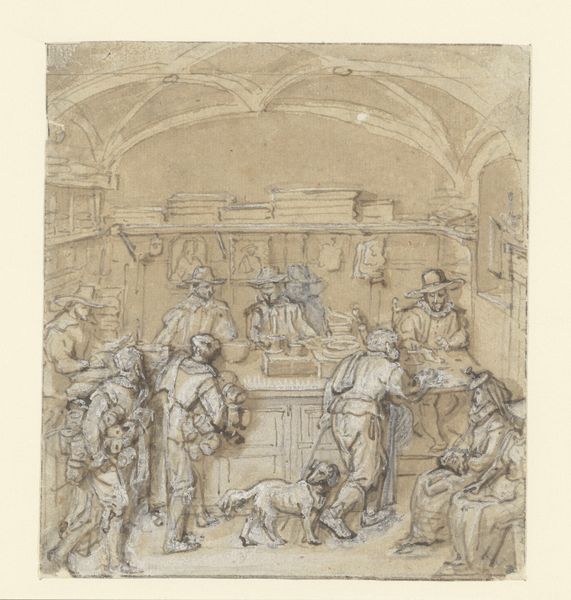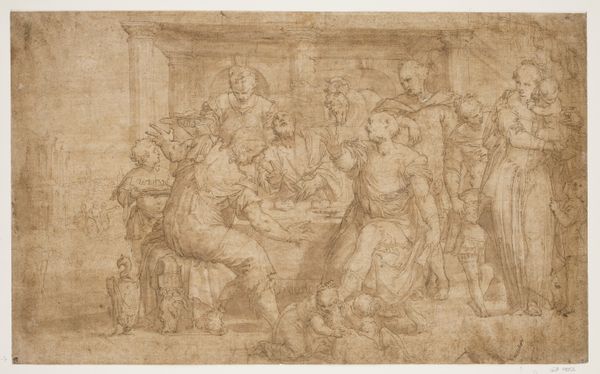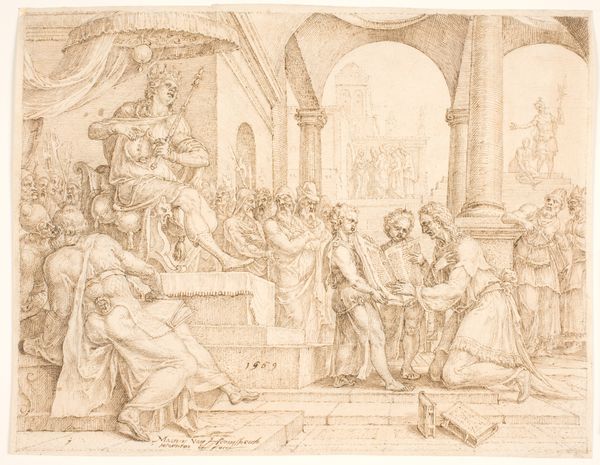
drawing, paper, ink, chalk, pen
#
drawing
#
high-renaissance
#
narrative-art
#
etching
#
figuration
#
paper
#
ink
#
pen-ink sketch
#
13_16th-century
#
chalk
#
pen work
#
pen
#
history-painting
Copyright: Public Domain
Curator: This delicate drawing, rendered in pen, ink, and chalk on paper, depicts The Wedding of Esther and Ahasuerus and dates back to around 1548 or 1549. Giorgio Vasari, a towering figure of the High Renaissance, created this scene, which now resides in the Städel Museum. Editor: Immediately, I'm struck by the composition. The strong verticals of the columns rhythmically divide the space. The way Vasari uses hatching and cross-hatching to create depth is remarkable. It gives a real sense of atmosphere. Curator: Absolutely. Vasari masterfully uses the architectural setting as a stage, embedding potent cultural references to classical ideals of power. The very choice of Esther’s wedding itself resonates with themes of salvation and triumph over adversity, narratives deeply embedded in our collective psyche. Editor: Looking at the distribution of figures, there’s a careful balance. On one side we have figures leaning against columns as well as people seemingly involved in acts of service; this gives it a dynamic tension and prevents the symmetry from becoming static. I would also comment on the material—paper is particularly susceptible to deterioration. Curator: Yes, the narrative embedded here speaks to a wider cultural desire for heroic tales. Note the light play on drapery and figures; such detail reflects a conscious use of artistic style to embed ethical meaning. The choice of this particular biblical event, drawn with such finesse, implies a deep respect for the stories that form and shape our collective memory. Editor: The linework itself, look at the density—areas are teeming with tiny intricate cross hatches to delineate planes, but it’s all carefully controlled. This controlled rendering gives us volume. The contrast emphasizes areas he would want to call our eye to, giving his scene emphasis in just the right spots. It is also the foundation for creating a consistent style across drawing materials to deliver on his subject. Curator: I've always found the power of images like these resides in how well they manage to trigger recognition—the ability to tap into ingrained knowledge and offer a lens through which to interpret history itself. Editor: This exploration gives the work continued engagement—even after nearly half a millennium.
Comments
No comments
Be the first to comment and join the conversation on the ultimate creative platform.
